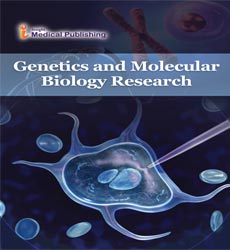Ring Chromosome and Clinical Findings: Reports Cases of 4 Different Chromosomes in Beninese Population
Ring chromosome is a disorder in which one or both ends of a chromosome are lost and joined, so they could show a ring-shaped structure. Patients with ring chromosomes could therefore present with features of deletion of long or short arms of the chromosome syndromes or a combination of both. The phenotypic of these individuals depends on the size of the ring chromosome, the amount of genetic material lost in breakage, the stability of the ring chromosome, and the presence of secondary chromosomal aberrations including the varying degrees of mosaicism. Ring chromosomes account for a very low percentage of structural chromosomal abnormalities but could lead to major clinical concerns and complicated genetic counseling. Practitioner awareness must be permanently raised to help in managing efficacy in patients with ring condition. We report here 4 cases of rings on chromosomes 4, 9, 15, and X. We described their clinical finding and draw attention to common key signs that were present in the reported cases, and also discussed recurrence risk. A ring chromosome is a chromosome whose arms have fused together to form a ring. Ring chromosomes were first discovered by Lilian Vaughan Morgan in 1926. Constitutional ring chromosomes have been identified for each of the human chromosomes and the overall frequency is estimated at 1 in 27:000 to 62:000 births [2]. Rings result from rare intrachromosomal fusions although mechanisms underlying chromosomal ring formation are not completely understood. These fusion events are hypothesized to arise from either unstable telomeres, which directly fuse, or from chromosomal breaks that resolve by fusion of the two chromosomal arms. The phenotype of these individuals depends on the size of the ring chromosome, the amount of genetic material that is lost in breakage, the stability of the ring chromosome, and the presence of other types of chromosomal abnormalities including mosaicism.
Open Access Journals
- Aquaculture & Veterinary Science
- Chemistry & Chemical Sciences
- Clinical Sciences
- Engineering
- General Science
- Genetics & Molecular Biology
- Health Care & Nursing
- Immunology & Microbiology
- Materials Science
- Mathematics & Physics
- Medical Sciences
- Neurology & Psychiatry
- Oncology & Cancer Science
- Pharmaceutical Sciences
